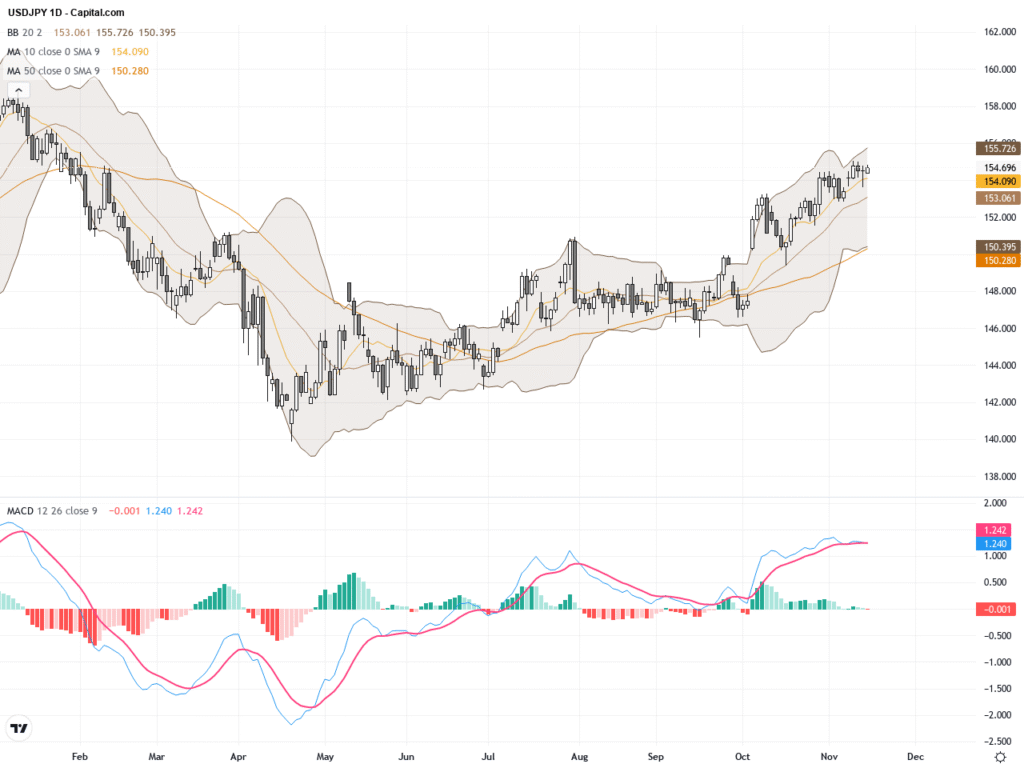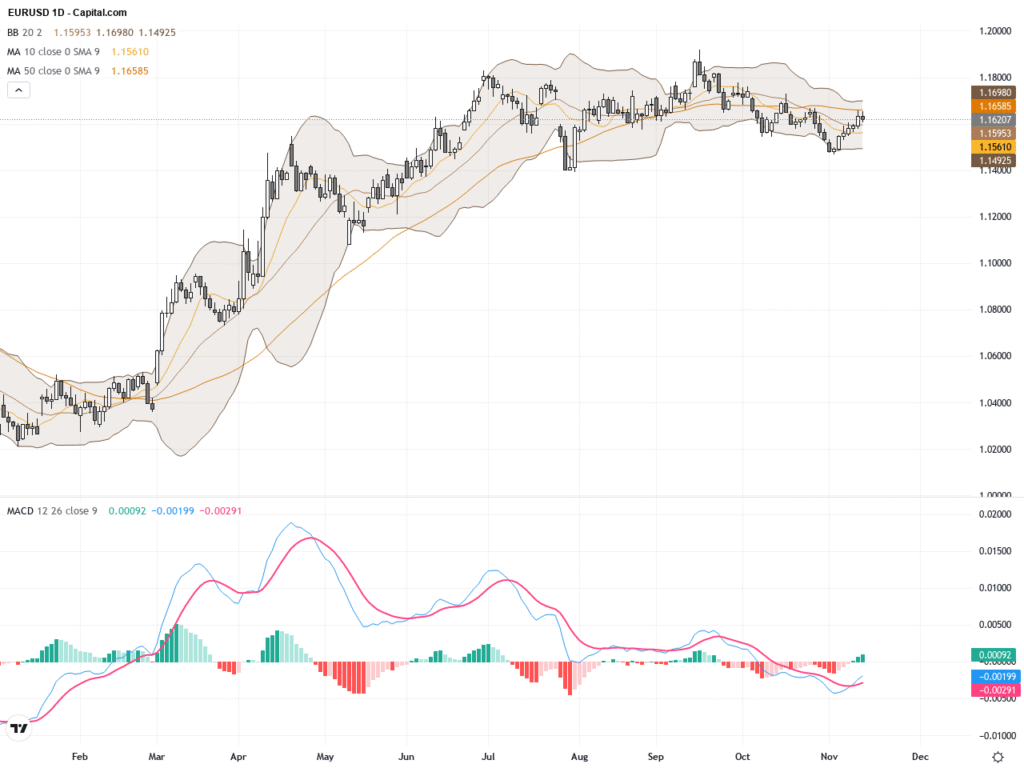 |
| Gold V.1.3.1 signal Telegram Channel (English) |

Commodities and the Next Major Macro Phase: Navigating a Bifurcated Market Amid Structural Transitions and Emerging Risks
2025-11-18 @ 00:12
Commodities and the Next Major Macro Phase: Navigating a Bifurcated Market Amid Structural Transitions and Emerging Risks
The global commodity markets stand at a critical inflection point as 2025 draws to a close, characterized by a profound divergence in price trajectories and fundamental drivers that reveal an economy in transition rather than in decline. While headline commodity indices project price declines of approximately twelve percent in 2025 followed by another five percent decline in 2026, this aggregate figure obscures a far more nuanced reality where energy commodities face structural headwinds from oversupply and weakening demand, precious metals continue their record rally fueled by safe-haven demand and central bank accumulation, and critical transition metals experience competing pressures from structural growth in electrification offset by cyclical softness.
The Bifurcated Commodity Market: Understanding the Profound Divergence in Price Trajectories
Contemporary commodity markets reveal not just generalized softness, but a stark divergence across sectors reflecting an economy fragmenting along multiple dimensions simultaneously. The World Bank forecasts commodity prices will fall by seven percent in both 2025 and 2026, marking multiple consecutive years of decline; yet precious metals like gold and silver have surged dramatically—gold prices rallying approximately 42% year-over-year in the first nine months of 2025, their strongest gain since the late 1970s. This rally is underpinned by persistent geopolitical tensions, economic uncertainty, and historically elevated central bank gold purchases. Conversely, energy commodities grapple with unprecedented oversupply: Brent crude oil prices are forecast to decline to their lowest levels in half a decade due to OPEC+ production increases and weakening global demand, especially as electric vehicle adoption displaces oil consumption.
Industrial metals such as copper are caught at the intersection of structural demand growth—driven by renewables, electrification, and AI data centers—and cyclical headwinds including Chinese demand softness and tariff uncertainties. Technical patterns illustrate these tensions with mixed signals across different timeframes, reflecting volatility amid competing macroeconomic narratives. This bifurcation is not indicative of equilibrium but rather a complex interplay between persistent inflation/monetary concerns fueling safe-haven assets and economic stagnation suppressing cyclical commodity demand.
Energy Sector Under Pressure: The Oil Glut and Structural Headwinds in a Transitioning World
The energy sector confronts unparalleled challenges: 2025’s projected 12% price decline in energy commodities signals shifting fundamentals driven by slowing demand growth, oversupply, and the accelerating electrification of transportation. OPEC+ has substantially increased output, effectively reversing prior supply cuts and prioritizing market share over price stabilization. Electric vehicles, now four percent of the global passenger fleet and notably prominent in China, are displacing millions of barrels per day in measured oil demand, altering long-term energy consumption trajectories. The International Energy Agency forecasts a record oil surplus that may push prices into low $40 ranges should excess inventories build as expected.
Natural gas dynamics diverge by region, with the U.S. experiencing a price surge driven by European LNG demand amid energy security imperatives. Despite increased LNG exports, structural constraints in liquefied natural gas capacity suggest sustained elevated prices into 2026. Furthermore, the broader materials intensity shift from fuel to minerals—renewables requiring exponentially more critical minerals than fossil fuel generation—frames the sector’s transition and sets the foundation for long-term demand growth in metals integral to clean energy technologies.
Precious Metals Surge: Safe-Haven Demand and the Monetary Debasement Supercycle
Precious metals have emerged as dominant beneficiaries of macroeconomic uncertainty and monetary policy shifts. Gold prices have surpassed $3,800 per ounce, driven by geopolitical tensions, institutional repositioning, and record central bank purchases that signal a broad structural recalibration of reserve asset strategies. Institutional endorsements of gold as a core portfolio component reveal a paradigm shift, with allocations to gold as high as 20% being contemplated, far exceeding traditional portfolio ratios. The magnitude of such reallocations, even at partial adoption levels, threatens to overwhelm current annual mine supply, precipitating a sustained bull market beyond typical cyclical safe-haven dynamics.
Silver’s appreciation—around 34% in 2025—is supported by its dual role combining investment appeal and substantial industrial consumption underpinned by energy transition demand. Supply deficits induced by inadequate mining output compound upward price pressure. Technical analyses foresee continuation of this bull run, with convergence of cycle structures, pricing patterns, and geopolitical risks reinforcing prospects for further upside into 2026.
The Energy Transition Supercycle: Structural Demand for Critical Metals Amid Supply Constraints
A defining theme for the next macro phase is the emergence of a supercycle driven by structural energy transition imperatives rather than cyclical growth. Demand for critical minerals is projected to increase sixfold by 2030, driven by renewable infrastructure, electric vehicles, and AI-related data center construction. Copper demand alone could more than double by 2050 under ambitious climate scenarios, while lithium face acute supply deficits given mining expansion limitations and long lead times for new capacity. Geographic concentration risks intensify supply vulnerabilities, with China dominating refining capacities for aluminum, copper, and rare earths, prompting strategic stockpiling and domestic production efforts by western nations.
Uranium stands out amid the nuclear resurgence, with demand expected to rise by over 28% by 2030 amid expanding global nuclear capacity. Price appreciation reflects these fundamentals, with consensus forecasts anticipating a continued rally driven by policy prioritization and geopolitical energy security considerations. Structural underinvestment in mining capacity during previous commodity downturns exacerbates bottlenecks, highlighting an urgent need for capital deployment to meet accelerating demand cycles and avoid energy transition delays.
Macroeconomic Headwinds: Trade Policy Uncertainty, Weakening Growth, and Monetary Easing
A confluence of cyclical headwinds dampens commodity markets: global growth is slowing amid persistent trade policy uncertainties, particularly U.S.-China tariff spats affecting metals and semiconductors. Chinese demand softness, notably within the real estate and manufacturing sectors, further constrains traditional commodity consumption, underpinning the bifurcation in demand profiles across commodity categories. Monetary policy dynamics have pivoted toward easing, with the U.S. Federal Reserve reducing rates in late 2025, potentially facilitating a more supportive environment for real assets and precious metals while tempering cyclical commodity weakness.
Currency fluctuations, particularly the weakening U.S. dollar through 2025, have provided tailwinds for commodity prices outside energy sectors. Still, any reversal toward renewed dollar strength driven by geopolitical risk or stronger-than-expected growth could pressure commodities further. This environment demands careful navigation by market participants given its implications for capital flows, real asset valuations, and policy expectations.
Geopolitical Risks and Supply Chain Vulnerabilities: An Underpriced Tail Risk to Commodity Prices
Elevated geopolitical tensions across multiple theaters — from Russia-Ukraine conflict to Middle East instability and U.S.-China strategic competition — introduce substantial upside risk to commodity prices through potential supply disruptions. Sanctions on Russian energy firms, ongoing conflicts affecting Middle East oil supply chains, and the prospect of rare earth export controls by China underscore vulnerabilities that could rapidly shift market equilibria.
Physical supply chain risks also derive from climate-linked disruptions, shipping lane instabilities, and acute weather events impacting mining operations. The copper market’s sensitivity to production shocks underscores limited spare capacity and the strategic importance of resilient supply chains in an era of geopolitical fragmentation and climate volatility. These multidimensional risks necessitate diligent risk management and strategic preparedness.
Investment Implications and Forward-Looking Scenarios: Positioning for a Bifurcated Commodity Future
The bifurcated commodity landscape requires investor finesse: precious metals and critical transition minerals present compelling medium- to long-term allocations underpinned by structural demand and monetary tailwinds, despite near-term cyclical risks and policy uncertainties. Uranium and nuclear-related assets merit attention given the convergence of energy transition priorities and geopolitical supply constraints.
Energy commodities, particularly oil, demand a cautious but vigilant stance: structural headwinds coexist with the potential for rapid supply shocks that could catalyze sharp price corrections. Agricultural commodities provide a relatively clear near-term outlook with easing prices but remain exposed to climatic and geopolitical disruptions that could trigger future volatility. Managing exposures through nuanced, scenario-based frameworks will be critical as markets grapple with overlapping cyclical and structural forces.
In sum, the next major macro phase in commodities is defined by fundamental divergence — a supercycle driven by energy transition imperatives counterbalanced by cyclical softness and seismic geopolitical risks. Mastery of this complex dynamic will define successful market participation and capital allocation in the years ahead.








